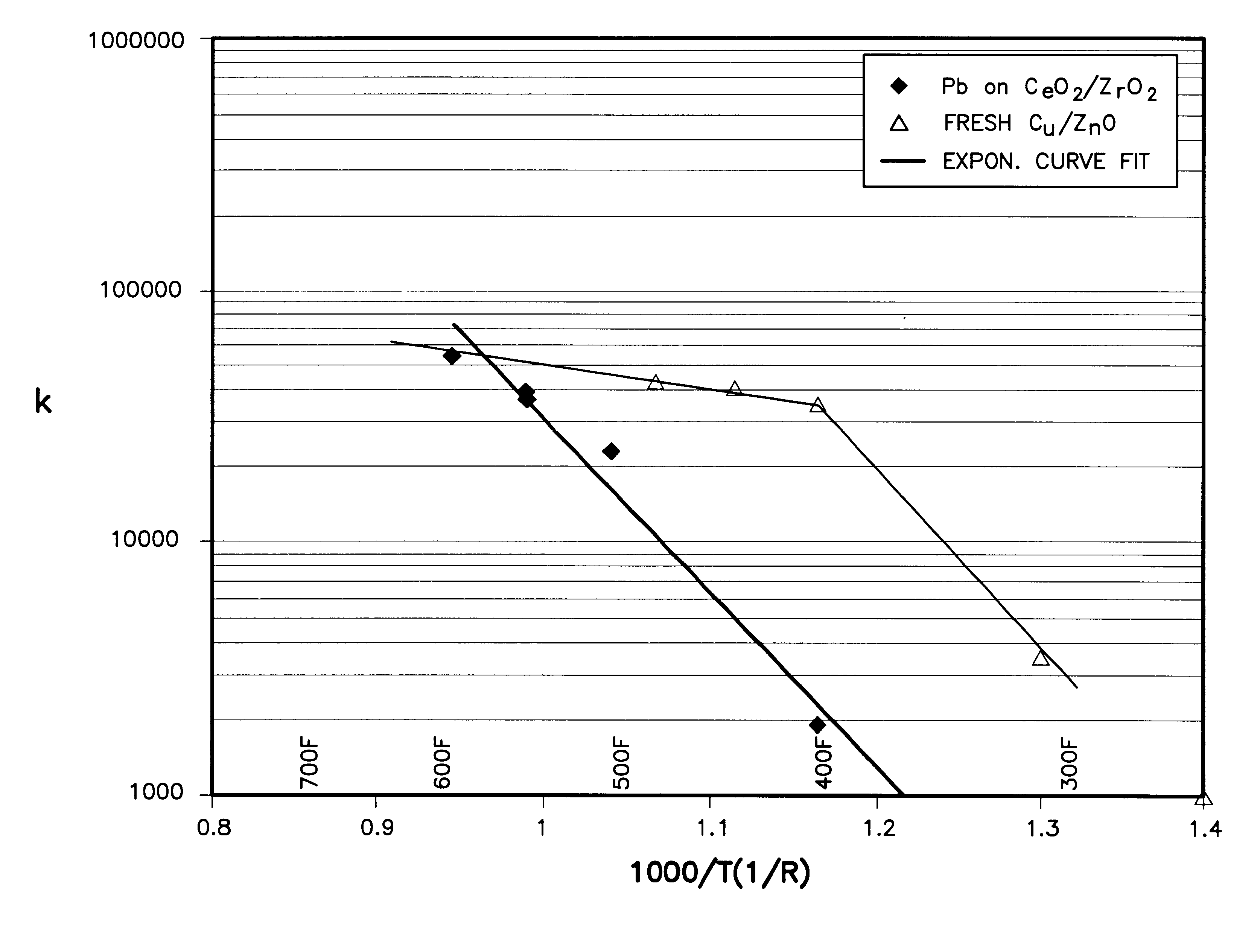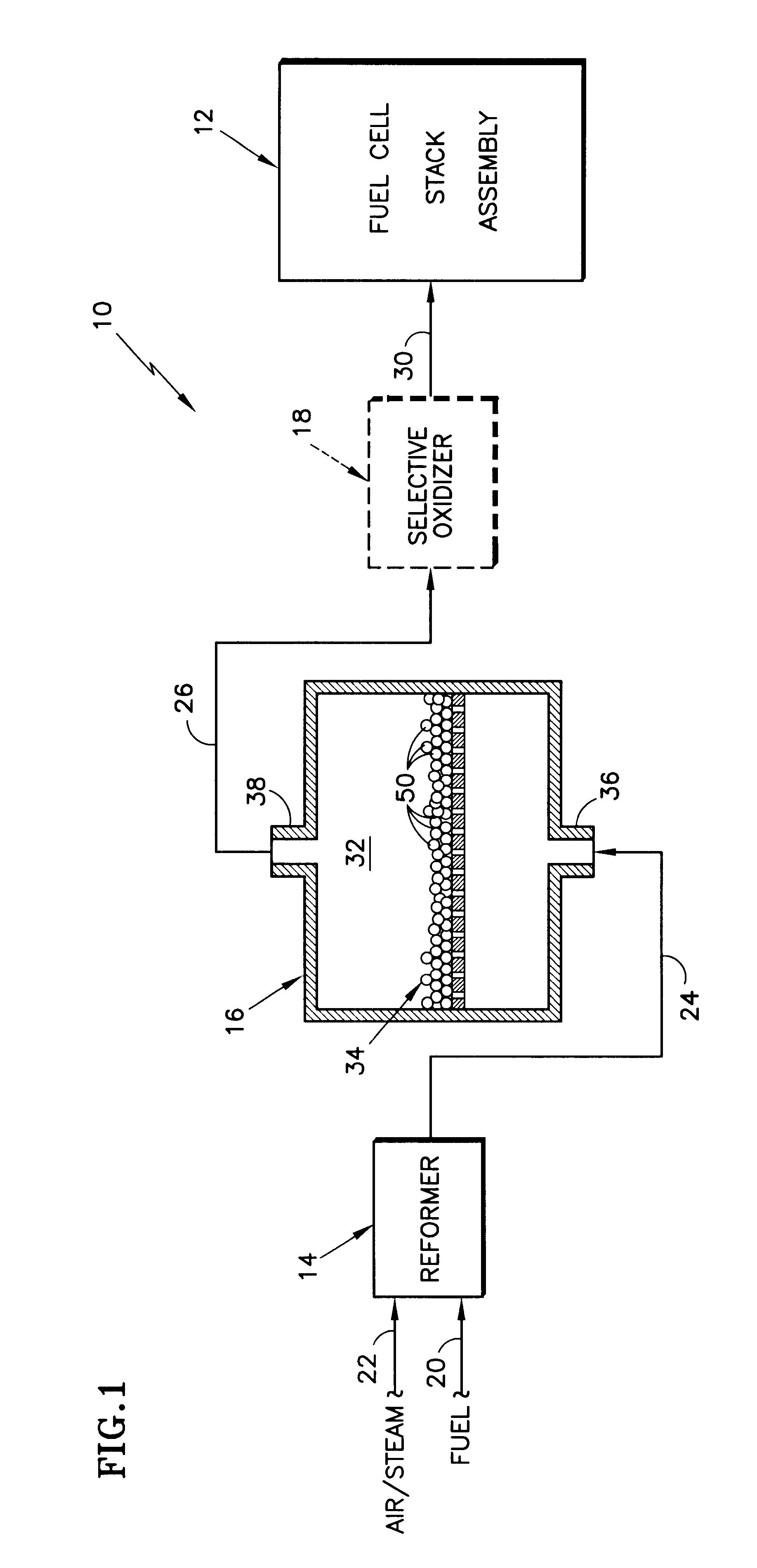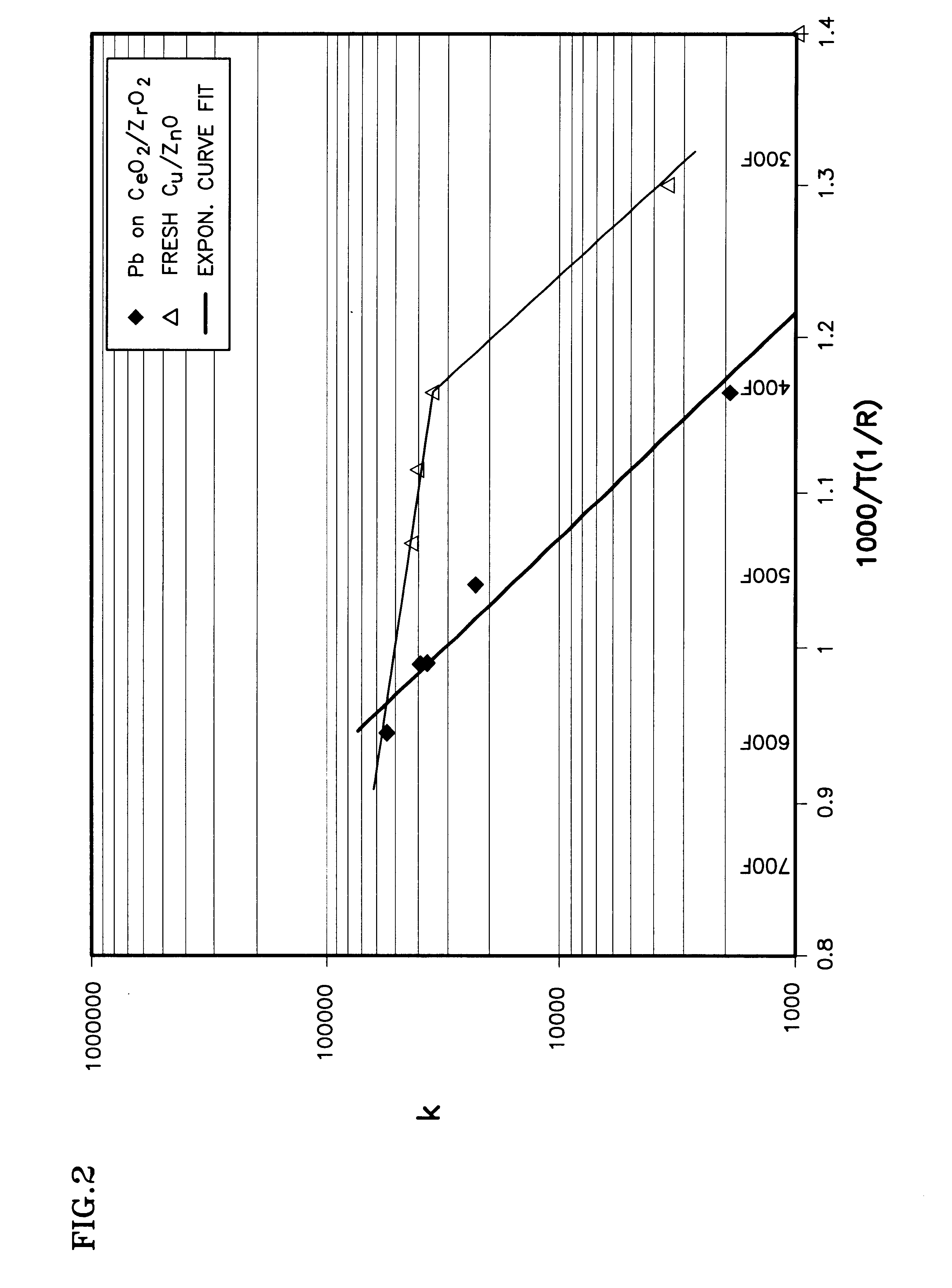Shift converter having an improved catalyst composition, and method for its use
a technology of shifting converters and catalyst compositions, which is applied in the direction of catalyst carriers, physical/chemical process catalysts, separation processes, etc., can solve the problems of significant oxidation or exposure, the limitation of reactors using these catalyst compositions, and the "poisoned" anode electrodes, which form part of the fuel cell stack, so as to reduce the amount of carbon monoxide and improve the catalyst composition
- Summary
- Abstract
- Description
- Claims
- Application Information
AI Technical Summary
Benefits of technology
Problems solved by technology
Method used
Image
Examples
Embodiment Construction
Steps:
1. Weigh out and dry the pellet support (MEI 01023) for 2 hours at 100.degree. C.
2. Dissolve Pt (NH.sub.3).sub.2(NO.sub.2).sub.2 in 10.248 ml concentrated nitric acid as indicated, stirring constantly.
3. Once Pt dissolved, add Pt acid solution to the DI water.
4. Pour resulting solution over dried pellets, then stir with glass or Teflon.RTM. stirrer until support is uniformly coated.
5. Dry resulting mixture for 1h at 100.degree. C., then calcine 4h at 400.degree. C.
6. Weigh dried and calcined mixture to assure / determine complete mass balance.
This formulation uses pellets of the ceria and zirconia, and coats it with the platinum. The resulting dried and calcined mixture represents the catalyst composition 50.
Alternatively, powders of the mixed metal oxide may be wash-coated onto an appropriate supporting substrate of alumina or-cordierite, or such, and then the platinum can be applied to the wash-coated support in a manner s similar to the preparation of the pellets. Further, it...
PUM
| Property | Measurement | Unit |
|---|---|---|
| operating temperatures | aaaaa | aaaaa |
| temperature | aaaaa | aaaaa |
| temperature | aaaaa | aaaaa |
Abstract
Description
Claims
Application Information
 Login to View More
Login to View More - R&D
- Intellectual Property
- Life Sciences
- Materials
- Tech Scout
- Unparalleled Data Quality
- Higher Quality Content
- 60% Fewer Hallucinations
Browse by: Latest US Patents, China's latest patents, Technical Efficacy Thesaurus, Application Domain, Technology Topic, Popular Technical Reports.
© 2025 PatSnap. All rights reserved.Legal|Privacy policy|Modern Slavery Act Transparency Statement|Sitemap|About US| Contact US: help@patsnap.com



